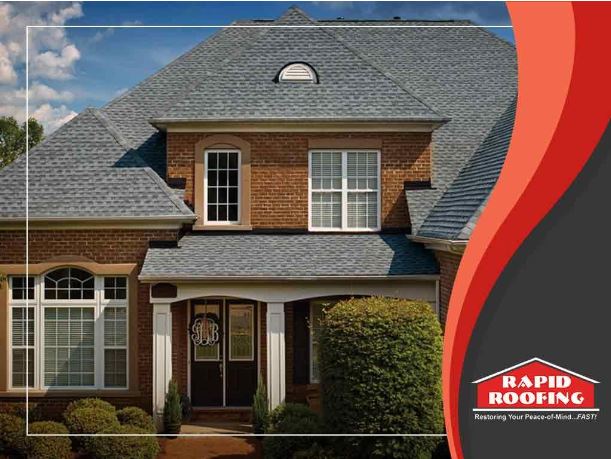Eco Friendly Roof: Top Sustainable Options for Michigan and Ohio Homes
Choosing a roofing system that balances sustainability and durability is more important than ever. For homeowners across Southeastern Michigan and Northwestern Ohio, eco-friendly roofing isn’t just a trend—it’s a smart investment. From unpredictable weather to seasonal extremes, homes in this region need roofing that performs well, lasts long, and supports environmental responsibility.
Opting for an eco friendly roof not only benefits the environment but also increases the energy efficiency and value of your home. The right roofing system can significantly enhance the sustainability and safety of your entire building.
Key Takeaways
- Eco-friendly roofs offer energy efficiency and environmental benefits
- Ideal options include metal, cool roofs, recycled shingles, and vegetative systems
- Sustainable materials reduce utility bills and extend roof lifespan in Midwest climates
Why Eco-Friendly Roofing Matters in the Midwest
Homes in areas like Ann Arbor, Toledo, and Bloomfield Hills face fluctuating temperatures, frequent storms, and winter snow loads. Traditional roofing can absorb heat, contribute to higher energy use, and wear out faster. Asphalt and asphalt shingles, while commonly used for their cost-effectiveness, tend to absorb more heat and are less environmentally friendly due to their limited recyclability and petroleum-based composition compared to eco-friendly alternatives.
Eco-friendly systems reduce environmental impact while handling Midwest challenges with ease. These roofs can improve insulation, helping to reduce heating needs in winter and lower emissions, which contributes to a smaller carbon footprint. Affordability is also a key factor when choosing sustainable roofing, as many eco-friendly options are both durable and affordable.
Benefits of Sustainable Roofing
Opting for sustainable roofing brings a host of advantages for both homeowners and the environment. One of the most notable benefits is the reduction of the heat island effect, which is especially important in urban and suburban areas of Michigan and Ohio. Cool roofs, including those made from metal roofing or featuring reflective coatings, help deflect the sun’s rays and minimize heat absorption. This not only keeps your home cooler during the summer but also leads to significant energy savings by reducing the need for air conditioning.
Eco friendly roofing materials such as recycled slate, clay tiles, and wood shingles are designed for durability and a longer lifespan, meaning fewer replacements and less waste ending up in landfills. Green roofs, which incorporate living plants, go a step further by improving air quality, reducing noise pollution, and helping to filter out air pollutants. These eco friendly options also require less maintenance over time, saving homeowners both effort and money. By choosing sustainable roofing, you’re investing in a solution that benefits your home, your wallet, and the planet.
Metal Roofing: Recyclable and Long-Lasting
Standing seam metal roofs are one of the most durable and sustainable options available. They’re made from recycled materials, reflect solar heat, and can last over 50 years with minimal upkeep. The process of manufacturing or recycling a metal roof often incorporates eco-friendly practices that help reduce emissions, making them an environmentally responsible choice.
- Benefits: Fire-resistant, snow-shedding, low-maintenance, and can improve the energy efficiency of buildings due to their reflective surfaces and coatings.
- Install: Professional installation is recommended to ensure the metal roof performs optimally and meets structural requirements.
- Great Fit For: Homes in Canton, Sylvania, and Ypsilanti with steep slopes and energy concerns, as well as a variety of buildings—both residential and commercial—where a metal roof is suitable for durability and sustainability.
CTA: Explore metal roofing options installed by certified Rapid Roofing specialists.
Cool Roof Systems for Energy Efficiency
Cool roofs use reflective coatings or materials to deflect sunlight and keep attics cooler. By utilizing light-colored surfaces that reflect the sun’s rays, cool roofs help maintain a more comfortable interior temperature and reduce the need for air conditioning. This reduces air conditioning demands in the summer and protects roofing materials from premature aging.
- Common Materials: Reflective shingles, white membranes, and treated metal
- Ideal For: Urban areas like Sterling Heights or Maumee with high sun exposure
Recycled Content Shingles
Shingles made from post-consumer materials, including rubber and plastics, offer an affordable option for eco-conscious homeowners seeking cost-effective roofing solutions with less environmental impact. For example, CertainTeed’s Symphony Slate is a recycled content shingle that mimics the look of natural slate while providing sustainable benefits. These products help divert waste from landfills and are engineered to handle tough weather conditions, making them resistant to rot and reducing the need for frequent replacing of damaged or aged shingles.
- Popular Types: Composite or synthetic shakes and slates
- Best Suited For: Homeowners wanting wood-look aesthetics without environmental drawbacks
Green Roofing Systems
Though less common for residential homes, vegetative (green) roofs—essentially rooftop gardens that can include trees and other vegetation—are growing in popularity for eco-conscious homeowners in cities like Ann Arbor. They involve planting vegetation over waterproof membranes and offer unmatched insulation.
- Pros: Improves air quality, manages stormwater, lowers heat island effect
- Considerations: Best for flat or low-slope roofs with proper structural support
Green roofs provide many benefits, including improved insulation, increased biodiversity, and effective stormwater management.
Roofing Material Considerations
When selecting the right roofing material for your home, it’s important to weigh several key factors to ensure you’re making an eco friendly and cost-effective choice. Metal roofs, made from materials like aluminum, copper, or steel, are a top pick for their durability, long lifespan, and the ability to be crafted from recycled materials. These metals also offer excellent reflective properties, which can help lower energy costs by keeping your home cooler in the summer.
Slate tiles and clay tiles are other durable options that provide a classic look with a standard curve, and they’re known for their resistance to harsh weather conditions. Wood shingles can be a sustainable choice if sourced from environmentally friendly suppliers, offering natural insulation and a unique aesthetic. For homeowners interested in renewable energy, integrating solar panels into your roofing system is an excellent way to further reduce your environmental impact and utility bills.
It’s also essential to consider the overall cost of materials and installation, as well as ongoing maintenance requirements. Eco friendly roofing materials often offer energy savings and reduced maintenance costs over time, making them a smart investment. By factoring in insulation, ventilation, and the environmental impact of your chosen materials, you can create a roof that is not only long lasting and durable but also supports a healthier environment for your family and community.
Choosing the Right Eco Roof for Your Home
Selecting a sustainable roof depends on your location, budget, aesthetic goals, and energy priorities. When choosing an eco friendly option, consider which is most suitable for your home by weighing each factor such as durability, cost, recyclability, and environmental impact. Our Rapid Roofing experts guide you through materials that offer the best performance for your unique needs across Michigan and Ohio.
FAQs: Eco-Friendly Roofing in Michigan & Ohio
Q: Is eco-friendly roofing more expensive? Some options have higher upfront costs but offer energy savings and longer lifespans that reduce long-term expenses.
Q: Can I get tax credits for installing a green roof? Possibly. Check with local and federal programs for energy-efficient home upgrades.
Q: Do metal roofs qualify as eco-friendly? Yes. They’re recyclable, energy-efficient, and require minimal maintenance.
Q: How long do sustainable roofs last? Many eco-friendly materials last 30–50+ years with proper installation and care. When these roofs reach the end of their lifespan, the process of replacing old roofing materials with new, sustainable options helps maintain durability and supports eco-friendly practices.
Q: Are eco-roofs good for snowy regions? Absolutely. Options like metal and cool roofs shed snow and prevent ice dams.
Ready to Invest in a Sustainable Roof?
Rapid Roofing installs energy-efficient, sustainable roofing systems across Southeast Michigan and Northwest Ohio. We offer roof eco friendly solutions, including traditional red clay tiles and sustainable construction practices, to help you choose environmentally responsible options for your home. Whether you’re in Ottawa Hills or Plymouth, we deliver roofing that meets today’s eco standards with the trusted service our name is built on.




 Residential Roofing
Residential Roofing Storm Damage
Storm Damage Multi-Family Homes
Multi-Family Homes
